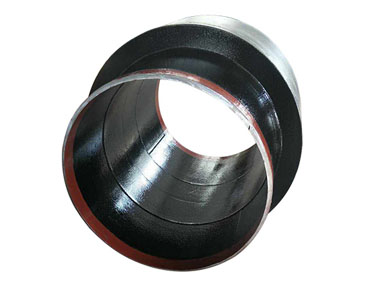The purpose of insulated joints is to prevent harmful electrochemical effects and to increase the effectiveness of the cathodic protection system. Isolation joints are also used to ensure effective current distribution in the cathodic protection system.
Insulated joints are an improved product based on insulating flanges. They are an indispensable and important pressure component in cathodic protection systems for steel pipelines. It is widely used in cathodic protection systems for steel pipelines.
Integral insulating joints are available in sizes from 50 NB to 200 NB (2" to 48") and in pressure ranges from ANSI 150 to ANSI 900.
Integral insulated joints are coated to prevent corrosion and are 100% tested for hydrostatic, electrical, and weld performance. Integral insulated couplings provide electrical segmentation and passive corrosion protection and they are installed on inlet and outlet pipes, water meters, tanks, pump stations and more.

Insulating Joints
The material placed inside the integral insulating joint also works by attracting an electrical charge and preventing corrosion. This is achieved by what is known as cathodic protection - the material in the joint becomes the anode and the pipe becomes the cathode. The anode protects the pipe from corrosion.
Insulated flanges are the most widely used form of controlling damage caused by corrosion. They can be used to control stray currents in oil, gas, water, refinery and chemical plant pipelines and to improve the effectiveness of cathodic protection systems and limit or eliminate electrolytic corrosion.
Insulating joints (or insulating joints or isolating joints) provide electrical isolation and cathodic protection in pipelines, tanks and pumping stations where oil, gas and water flow as carriers.
Insulation fittings are manufactured by forging the body, welding, painting, assembly and testing of the finished product. The body material is welded or seamless pipe in steel grades A106 GR.B, A53GR.B, API 5LGR.B, X42, X46, X52, X56, X60, X65, X70, ASTM A500/A500M, ASTM A795, etc.
It is fully factory assembled and hydrostatically tested to 1.5 times the working pressure prior to shipment. In addition, each joint is electrically tested to verify its insulating ability. No maintenance or replacement parts are required throughout the life of the insulated joint.
Integral joints with a prefabricated, non-separable and boltless design to meet customer requirements for a single-piece construction to simplify installation, eliminate maintenance and facilitate final wrapping and coating after installation in the pipe. The design was tested for compressive fatigue, torsional and flexural resistance to provide a design that is physically stronger than the pipe it is connected to.
Pipe insulation joints are used in both onshore and offshore projects. It is used worldwide to permanently control the flow of electrical current or to electrically isolate sections of pipelines and pipeline systems. Effective management of cathodic protection projects. Suitable media: for oil, gas, water, chemical materials and mineral slurries.
No.2 Shanghai Brilliant City, No.8666 Hunan Rd, Pudong new district, Shanghai-201314, China